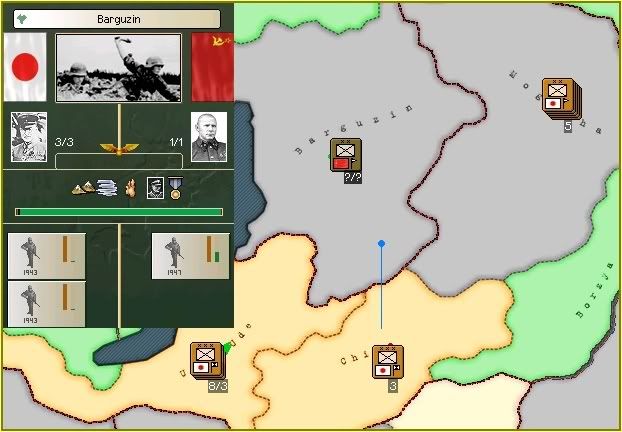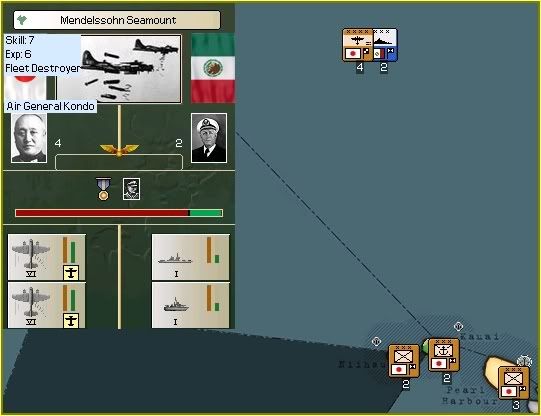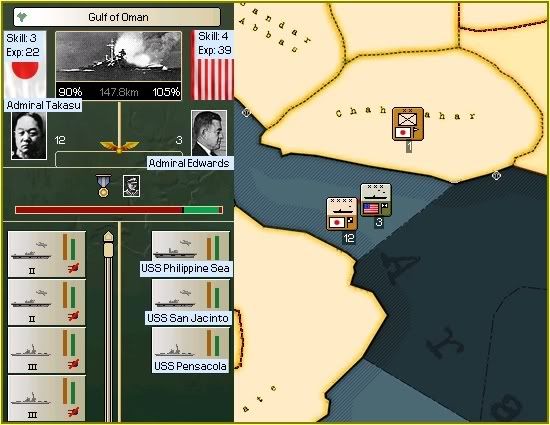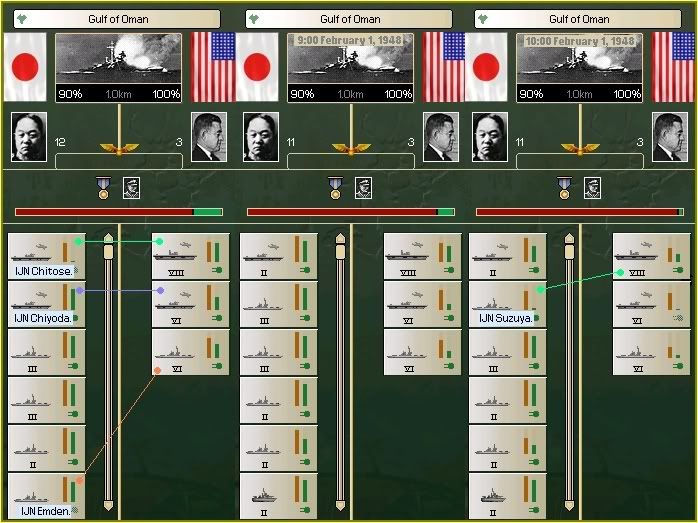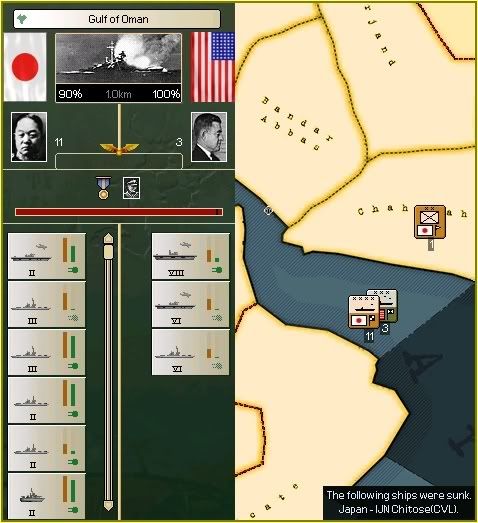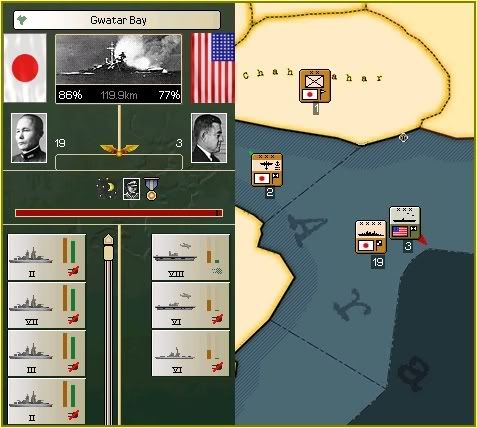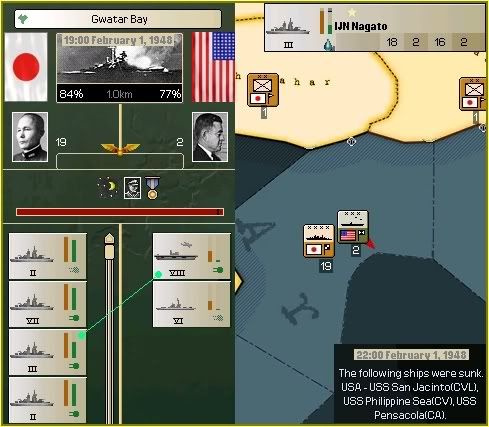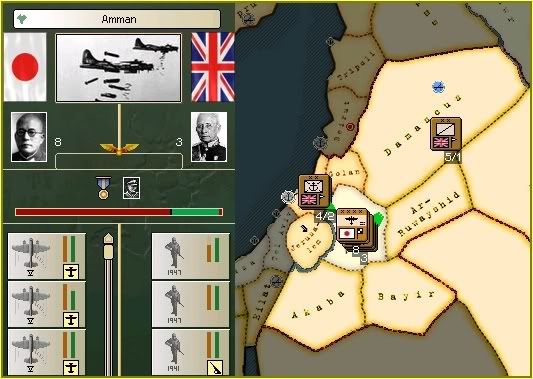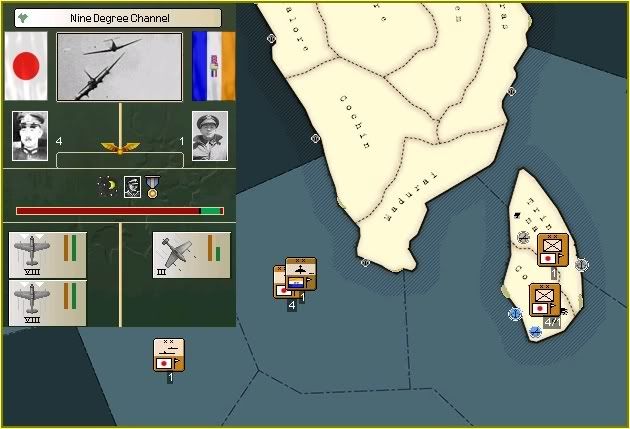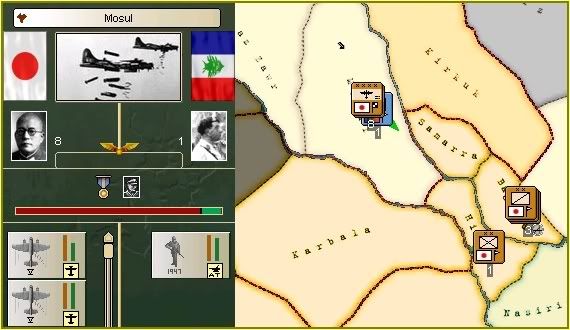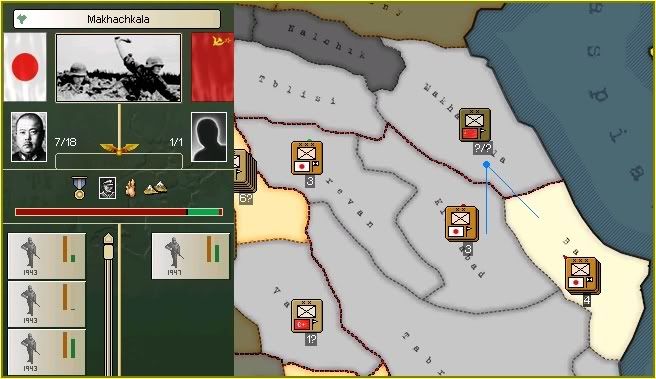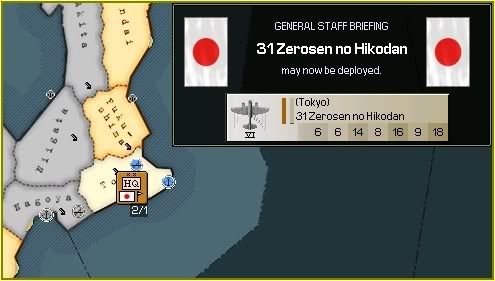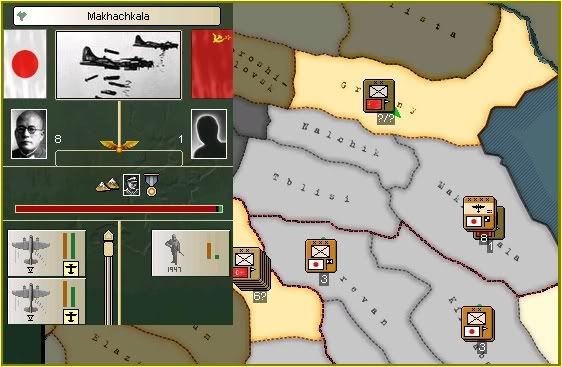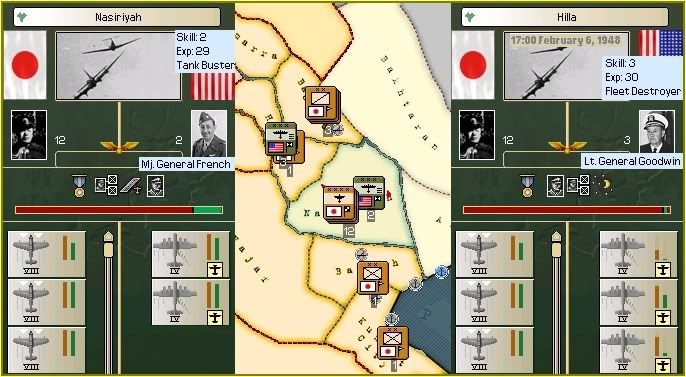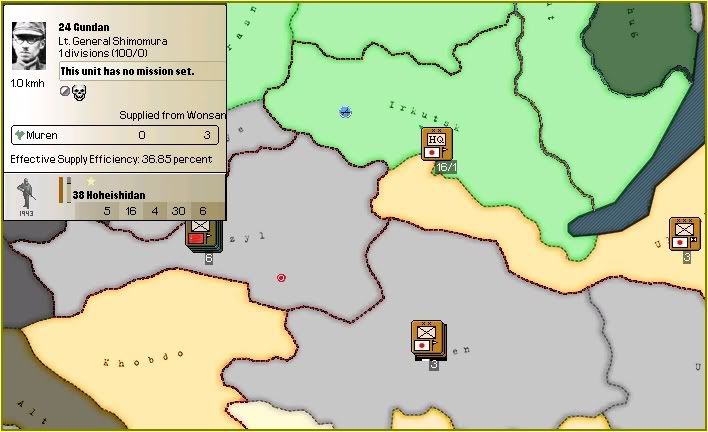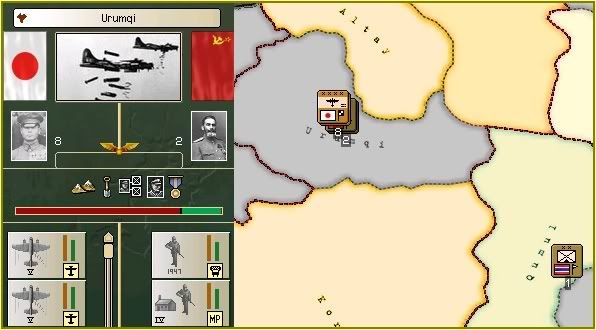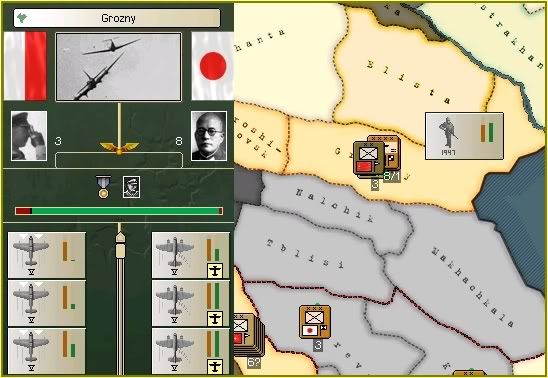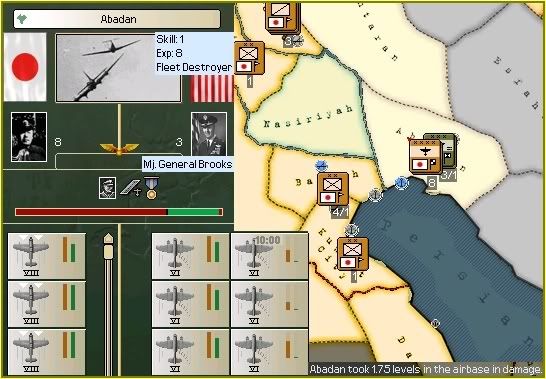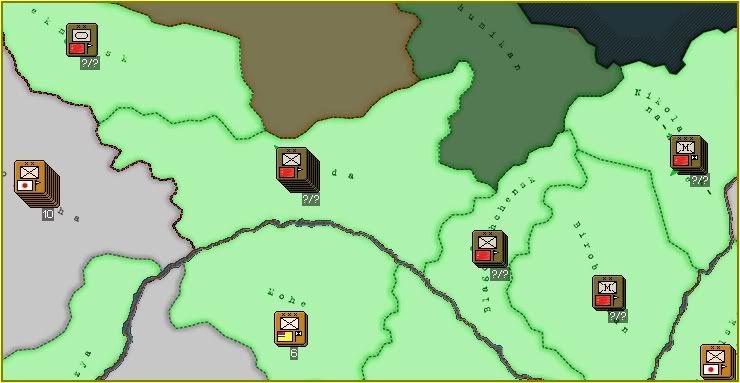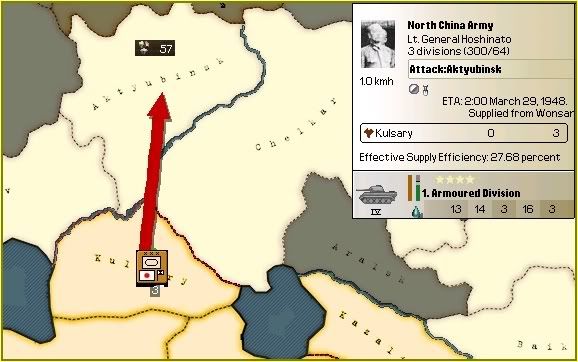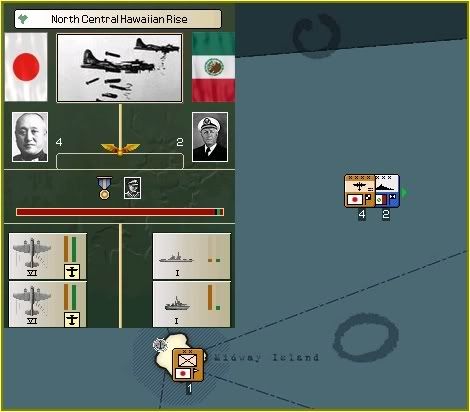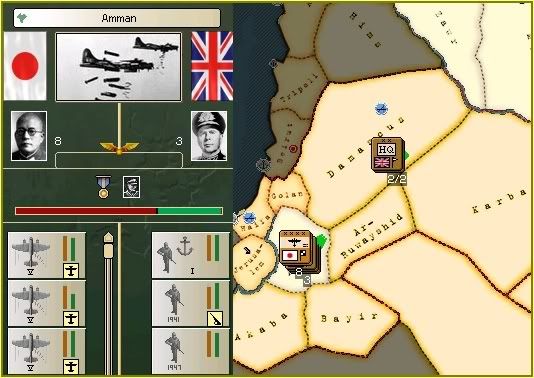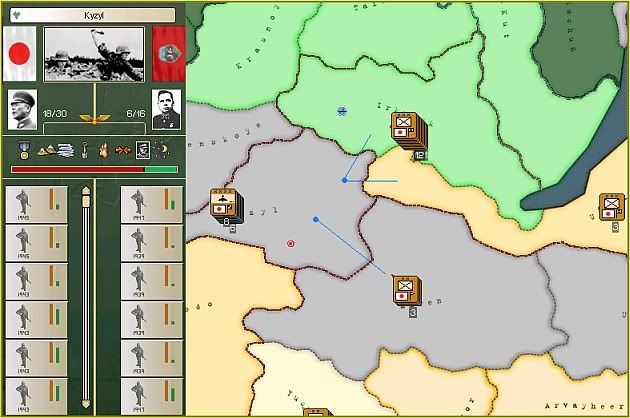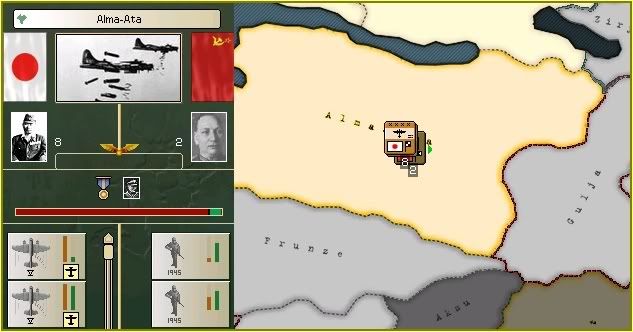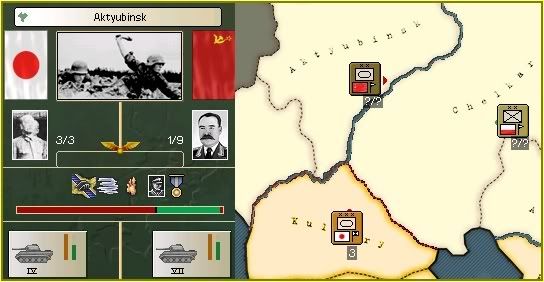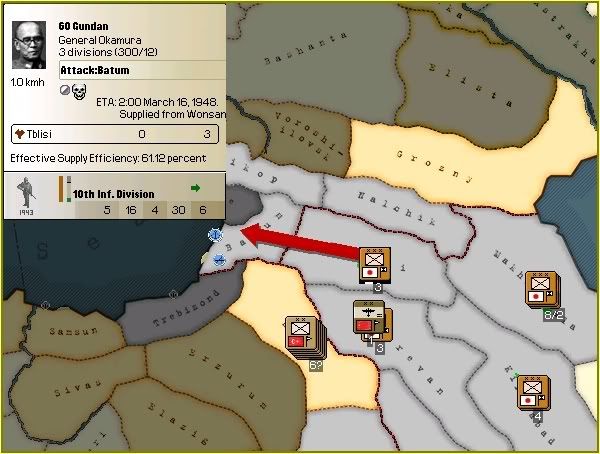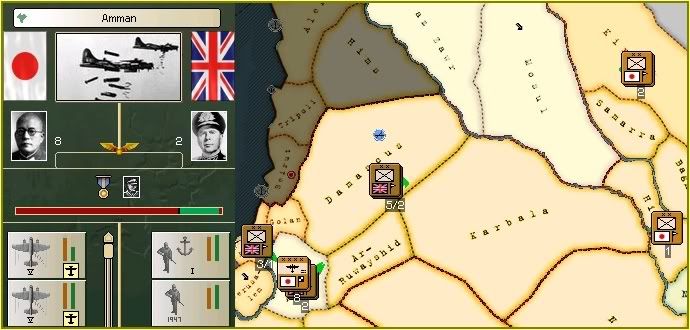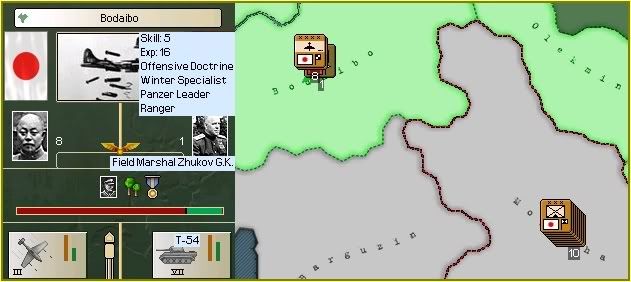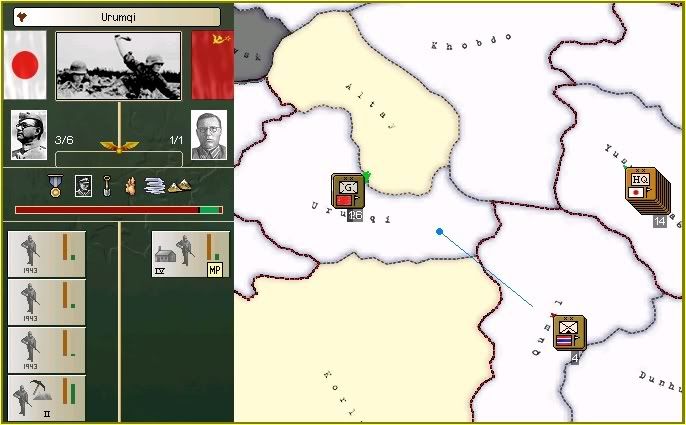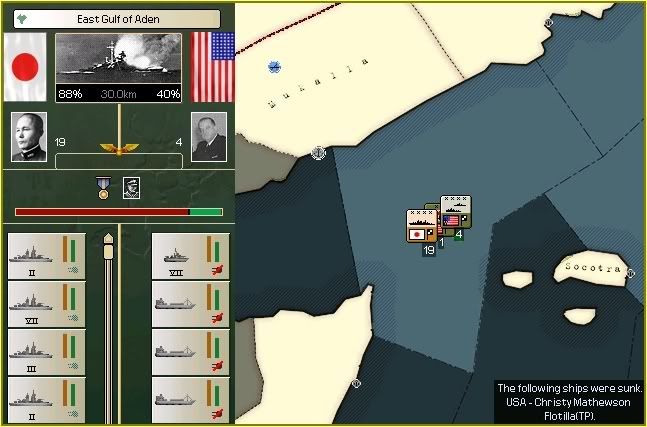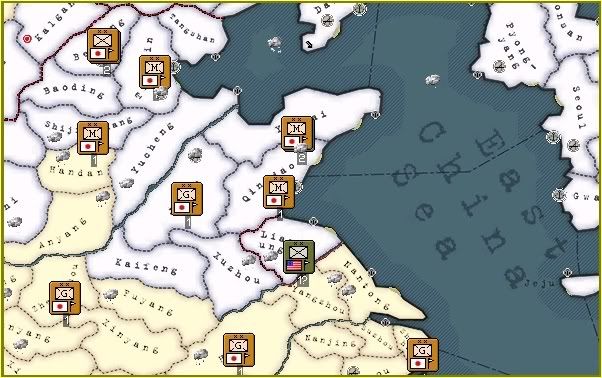Sokraates - The British AI does seem to be programmed to attack everywhere and not defend. I already control all but Zhambyl of the non snow covered provinces. There is a map in the update covering that area which shows how far south the snow goes.
safferli - Their research is very advanced
alan_le_cowboy - I don't find the economic map mode much use as it doesn't show much really. I will add some maps to the March 1st update to highlight the more significant areas with the actual province details added to the maps.
Thurak - The monthly report is a critical one You shall have your fleet combat of course.
You shall have your fleet combat of course.
I chose not to move CA Division 1 for a few reasons. The enemy fleet has no escorts which allows me to close to 1 nm for the battle allowing my superior numbers to tell.
I am invading along the Persian Gulf and I need to prevent enemy fleets entering it (This is probably the main reason the American fleet is even here as the AI knows I have a Transport fleet in this area).
If Edwards attacks CA Division 1 he will be bottled in the Persian Gulf as BB Division 1 would come up behind him. CA Division 1 would either sink or badly damage the CTF which would mean relatively light losses to BB Division 1 if it had to fight it as well. BB Division 1 is far more important than CA Division 1 and I would prefer any damage to be in the CA Division.
I could choose to just bomb the CTF but as it managed to go from Japan to the Arabian Sea undetected the chances of me sinking it that way are not good.
Nathan Madien - Fleet Train Doctrine adds 5% to CV's and DD's so its not that useful. Carrier Warfare, which is next, is a lot more useful as it adds 10% to CV, CA, CL and DD as well as 5% for CV's in bad conditions.
RioBrancoBaron - Thank you and welcome to the boards and this little AAR
Phax, Roman_legion - Correct. BB Division 1 would be my preference to engage first but having CA Division 1 attack first has its own rewards. The problem is night/day combat which I cannot dictate against a fleet as fast as this one. They are building lots of CV's and Air for the US, the Soviets are wasting a lot I think.
midget_roxx - Thanks and welcome This scenario is pretty hard certainly and I had some things go my way which could have gone differently. Energy early on came from conquest of China and its puppets and since then it is from trade with South American Countries. 160 Energy per day is traded for supplies with Venezuela alone. Its not just an oil rich country
This scenario is pretty hard certainly and I had some things go my way which could have gone differently. Energy early on came from conquest of China and its puppets and since then it is from trade with South American Countries. 160 Energy per day is traded for supplies with Venezuela alone. Its not just an oil rich country 
zdlugasz - Correct it does halt the gearing bonus. Police are built fast enough that I can stop and start with plenty of spare time between Garrison builds until the Garrison bonus gets very high. Police added to Infantry would help a little but I have too few Infantry divisions to leave them as garrisons. I need to replace them with the proper troops which are much better at partisan control. I don't want any of my Infantry as Garrison forces in the long run. There is also the added headache of getting the Police brigades to my Infantry.
harezmi - A celebration is always welcome Bayan Nur is actually partisan free as it belongs to Mengkukuo. I could continue the advance and redeploy strategy but Spring is actually not far away in the southern provinces and redeploying sucks organisation. I will need a few weeks to restore my organisation before the Spring offensive which is why I have made a line in the sand.
Bayan Nur is actually partisan free as it belongs to Mengkukuo. I could continue the advance and redeploy strategy but Spring is actually not far away in the southern provinces and redeploying sucks organisation. I will need a few weeks to restore my organisation before the Spring offensive which is why I have made a line in the sand.
Maj. von Mauser - The Emperor ordered it and so it must be
genbrad - Thank you. I am glad you are still enjoying the ride
Update to follow ...
safferli - Their research is very advanced
alan_le_cowboy - I don't find the economic map mode much use as it doesn't show much really. I will add some maps to the March 1st update to highlight the more significant areas with the actual province details added to the maps.
Thurak - The monthly report is a critical one
I chose not to move CA Division 1 for a few reasons. The enemy fleet has no escorts which allows me to close to 1 nm for the battle allowing my superior numbers to tell.
I am invading along the Persian Gulf and I need to prevent enemy fleets entering it (This is probably the main reason the American fleet is even here as the AI knows I have a Transport fleet in this area).
If Edwards attacks CA Division 1 he will be bottled in the Persian Gulf as BB Division 1 would come up behind him. CA Division 1 would either sink or badly damage the CTF which would mean relatively light losses to BB Division 1 if it had to fight it as well. BB Division 1 is far more important than CA Division 1 and I would prefer any damage to be in the CA Division.
I could choose to just bomb the CTF but as it managed to go from Japan to the Arabian Sea undetected the chances of me sinking it that way are not good.
Nathan Madien - Fleet Train Doctrine adds 5% to CV's and DD's so its not that useful. Carrier Warfare, which is next, is a lot more useful as it adds 10% to CV, CA, CL and DD as well as 5% for CV's in bad conditions.
RioBrancoBaron - Thank you and welcome to the boards and this little AAR
Phax, Roman_legion - Correct. BB Division 1 would be my preference to engage first but having CA Division 1 attack first has its own rewards. The problem is night/day combat which I cannot dictate against a fleet as fast as this one. They are building lots of CV's and Air for the US, the Soviets are wasting a lot I think.
midget_roxx - Thanks and welcome
zdlugasz - Correct it does halt the gearing bonus. Police are built fast enough that I can stop and start with plenty of spare time between Garrison builds until the Garrison bonus gets very high. Police added to Infantry would help a little but I have too few Infantry divisions to leave them as garrisons. I need to replace them with the proper troops which are much better at partisan control. I don't want any of my Infantry as Garrison forces in the long run. There is also the added headache of getting the Police brigades to my Infantry.
harezmi - A celebration is always welcome
Maj. von Mauser - The Emperor ordered it and so it must be
genbrad - Thank you. I am glad you are still enjoying the ride
Update to follow ...


